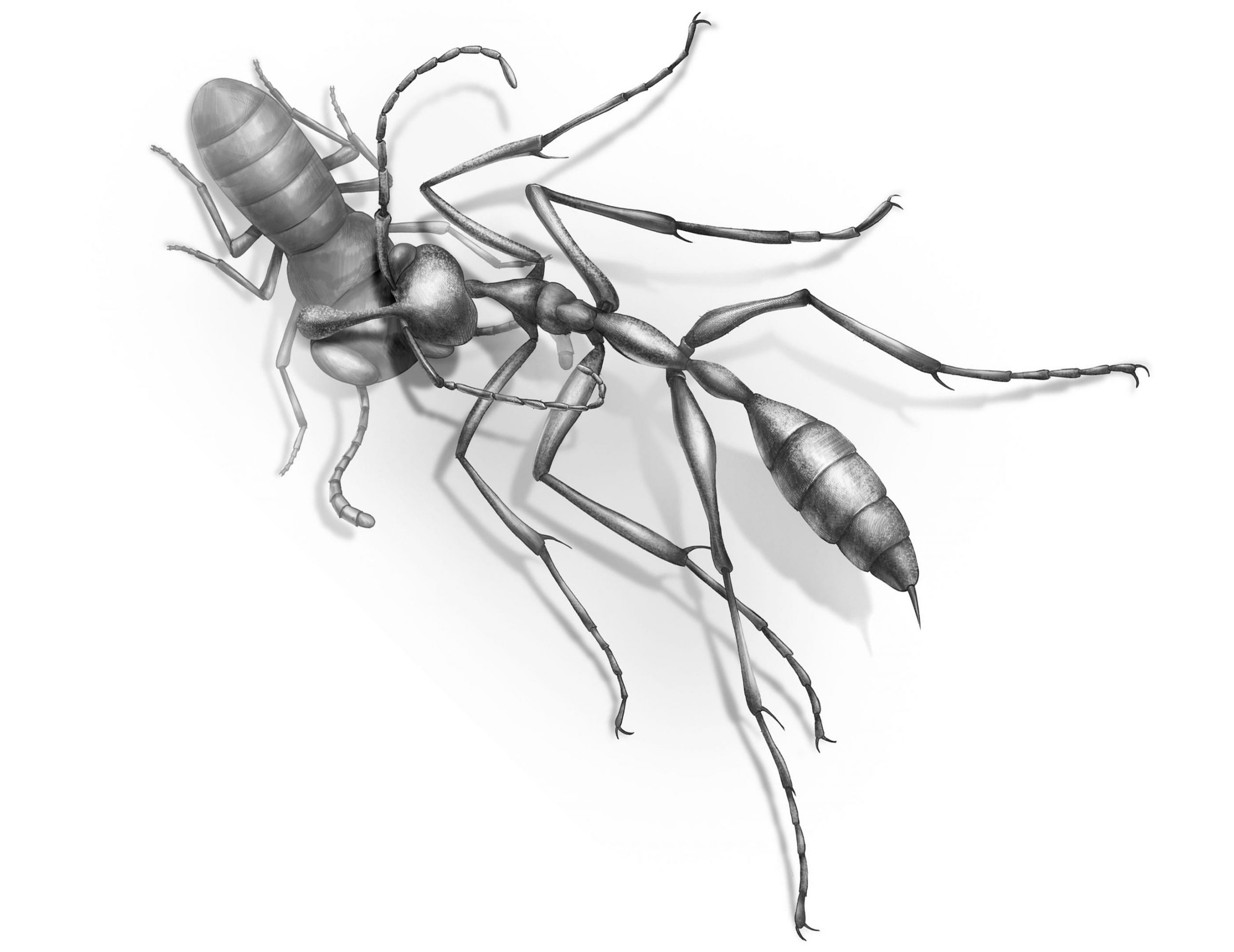
In findings published on August 6, 2020, in the journal Current Biology, researchers from New Jersey Institute of Technology (NJIT), Chinese Academy of Sciences and University of Rennes in France have unveiled a stunning 99-million-year-old fossil pristinely preserving an enigmatic insect predator from the Cretaceous Period — a ‘hell ant’ (haidomyrmecine) — as it embraced its unsuspecting final victim, an extinct relative of the cockroach known as Caputoraptor elegans.
The ancient encounter, locked in amber recovered from Myanmar, offers a detailed glimpse at a newly identified prehistoric ant species Ceratomyrmex ellenbergeri, and presents some of the first direct evidence showing how it and other hell ants once used their killer features — snapping their bizarre, but deadly, scythe-like mandibles in a vertical motion to pin prey against their horn-like appendages.
Researchers say the rare fossil demonstrating the hell ant’s feeding mode offers a possible evolutionary explanation for its unusual morphology and highlights a key difference between some of the earliest ant relatives and their modern counterparts, which today uniformly feature mouthparts that grasp by moving together laterally.
“This fossilized predation confirms our hypothesis for how hell ant mouthparts worked … The only way for prey to be captured in such an arrangement is for the ant mouthparts to move up and downward in a direction unlike that of all living ants and nearly all insects.”.
Phylogeny and Cephalic Homology of Hell Ants and Modern Lineages.
Barden’s team suggests that adaptations for prey-capture likely explain the rich diversity of mandibles and horns observed in the 16 species of hell ants identified to date.
Some taxa with unarmed, elongate horns such as Ceratomyrmex apparently grasped prey externally, while other hell ants such as Linguamyrmex vladi, or “Vlad the Impaler” discovered by Barden and colleagues in 2017, was thought to have used a metal-reinforced horn on its head to impale prey — a trait potentially used to feed on the internal liquid (hemolymph) of insects.
While no modern ants have horns of any kind, some species of hell ant possess horns coated with serrated teeth, and others like Vlad are suspected to have reinforced its horn with metal to prevent its own bite from impaling itself.”.
To explore further, the researchers compared the head and mouthpart morphology of Ceratomyrmex and several other hell ant species (such as head, horn and mandible size) with similar datasets of living and fossil ant species.
Moreover, the relationship between mandible and head morphology is unique in hell ants compared to living lineages as a result of their specialized prey-capture behavior.
While the fossil has finally provided Barden’s lab with firmer answers as to how this long-lost class of ant predators functioned and found success for nearly 20 million years, questions persist such as what led these and other lineages to go extinct while modern ants flourished into the ubiquitous insects we know today.
Reference: “Specialized Predation Drives Aberrant Morphological Integration and Diversity in the Earliest Ants” by Phillip Barden, Vincent Perrichot and Bo Wang, 6 August 2020, Current Biology
August 4, 2020
August 3, 2020
